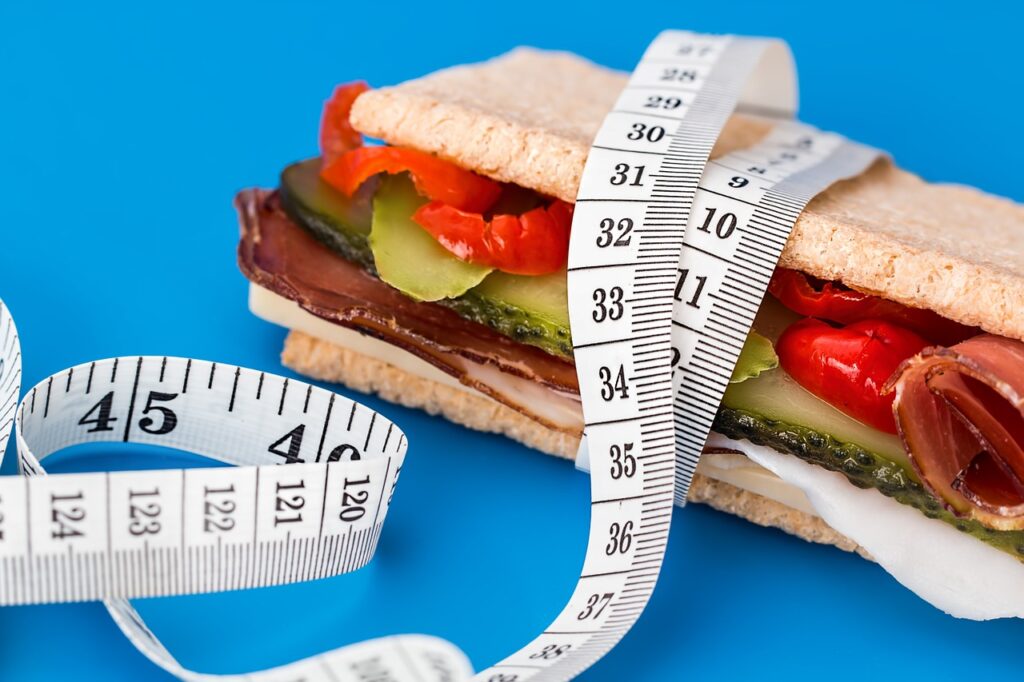Weight loss is a term that has gained a lot of hype in the current scenario. In this Era, every second person is going crazy over-weight loss and due to incomplete information and lack of awareness people end up losing an unhealthy weight that in turn causes harm to their bodies.
This is why it is extremely important to understand the difference between healthy weight loss and unhealthy weight loss and also the sole reason behind the importance of losing weight.
Here’s why people are unable to lose weight
Not being able to lose weight can have various reasons attached to it.
But oftentimes, it’s due to a lack of understanding, of the scientifically proven principles, behind Losing weight.
People are not consistent with their healthy eating patterns and balanced life and hence struggle in losing weight.
If you’re unaware of what causes weight loss, you might never achieve your fitness goals.
So what causes weight loss? Weight Loss Spell.
The most important variable behind weight loss will always be a calorie deficit.
Calorie deficit has been proven in hundreds of studies and can be considered the only scientific principle for achieving weight loss.
Now, what exactly is a calorie deficit?
From a scientific standpoint, whether you are gaining or losing weight, is determined by the First Law of Thermodynamics,
Which states that the energy cannot be created nor destroyed hence it can only be transformed.
It is said that body weight is dependent only on the difference between the number of calories that one consumes VS the number of calories that one burn. This is known as your calorie balance.
Before we discuss the different forms of calorie balances, Let’s first talk about what a calorie is.
What is a calorie?
Calories are the measurement of energy in food.
During the process of eating food, you are directly consuming the energy that is stored within the food. The body then uses this energy to produce movements and to keep you alive. Alternatively, if all the energy is not used right away, It can also be stored for later use.
Some energy can be stored in the muscles and liver as Glycogen, But only very little energy can be stored in body muscles and other organs. So the body will then store any additional calories, in the form of body fat.
Back to calorie balance
There are three different states of calorie balance, and you can only be in one of them at any given time. They are a Negative calorie balance, a Neutral calorie balance, and a Positive calorie balance.
Now let’s see what a negative calorie balance is. This occurs when someone burns more calories as compared to what they should ideally consume. That is, Your body needs more calories to produce energy for your daily functions than it gets from your food.
So it makes up the difference by burning the stored fat in your body for energy. This means you will be losing weight!
Because the necessary energy will come from breaking down the body tissues.
A negative calorie balance usually results in weight loss. This weight loss can sometimes be masked by increased water retention.
But, if we exclude this factor, then, there have been zero exceptions discovered in medical history, so far. So, If you maintain a negative calorie balance, you are bound to lose weight.
The second stage is a neutral calorie balance.
Here, A person’s intake of calories is the same as his expenditure on Daily activities like Walking, Talking, sleeping, etc. And body processes such as Respiration, Blood circulation, Digestion, etc. This means all the calories you consume will be used for some form of body process, and your weight will remain stable.
Now of course calorie intake and activities on any given day are not going to be 100 percent the same. But over weeks and months, a neutral calorie balance is quite possible.
If your weight hasn’t changed over the last few months, Your calorie balance is most likely neutral. The third and last stage is a positive calorie balance. Here, More energy is consumed through food, than what is being burned for body processes and body movements.
The extra calories are then stored either as glycogen in the muscle and liver or as body fat.
As you can see from these possible calorie balances, Only one will lead to weight loss. Which is a negative calorie balance. How large the deficit is, also determines how much weight you can lose over a certain period.
Obviously the larger the deficit, the more weight you will lose. But that doesn’t mean you should stop eating altogether, to create the largest possible deficit.
Please do not crash diet.
When we look at scientific facts, we can come up with a very simple equation that you’re probably already familiar with.
Calories in, versus calories out. Your calories are determined by your diet or food intake. In simple terms, it means how many calories you are consuming on any given day. Your calories are determined by several factors. Most notably, your metabolism, age, genetics, and exercise regime.
The last is the only one that you can make meaningful changes to, that is the calories burnt through exercising.
So for example, let’s say your Total Daily Energy Expenditure – TDEE is 2500 calories with your current level of Metabolism. That is, your body burns 2500 calories just on your Daily activities like Walking, Talking, sleeping, etc, and body processes such as Respiration, Blood circulation, Digestion, etc.
Let’s take 2 scenarios.
- You could reach a calorie deficit and lose weight, without exercising, by consuming only 2000 calories a day and solely relying on your metabolism to burn the 2500 calories.
- You could eat 2500 calories, and increase the calories out by exercising and burning an additional 500 calories through your workouts, which go on top of your TDEE of 2500 calories.
This will create (2500 + 500) ie, 3000 total calories as your calorie expenditure per day. And since you consume only 2500 calories through Food intake, You will be in a calorie deficit and lose weight.
In both cases, your total daily calorie deficit would be around 500 calories. But no matter which way you choose, one absolute requirement always stands.
To lose weight, You must create a calorie deficit. Nothing else works.
Difference Between Healthy and Unhealthy Weight Loss.
Now you must have understood that weight loss can be done in multiple ways, however, every pound of weight that you lose isn’t always considered to be healthy.
Case of crash dieting or losing weight through artificial and unhealthy means like the consumption of steroids etc can cause instant and quick weight loss but this, in turn, harms your body and is not sustainable in the long run.
However, losing weight with healthy eating habits and attaining a good healthy lifestyle will give you positive results and a sustainable outcome.
Most common causes of sudden weight changes
The first and most common one is water retention. Just like in the case of weight loss plateaus. Unwanted water retention can usually be overcome by drinking more and lowering your sodium intake.
- If you have been dieting for a very long time, several months, for example, the stress hormone cortisol can also lead to water retention.
- Another common reason for sudden weight changes is a higher-than-normal carb intake. Carbs are stored as glycogen in the liver and muscles.
- And each gram of glycogen is stored along with around 3 grams of water. So if you recently switched to a high-carb diet, then this might very well be the reason for your weight changes.
- Number 3 on the list is food. Food weighs something which means that if you weigh yourself right after you eat, you will weigh more than if you weigh yourself on an empty stomach.
- To cancel out these kinds of fluctuations, It is recommended to weigh yourself twice a week in the morning- after you get out of bed and before you eat breakfast.
Tips on how to lose weight fast
- Eat-in moderation
- Exercise According to your body type
- Eat foods with fewer calories
- Consume that are rich in nutrients
- Avoid overeating & the consumption of junk foods
However “dieting” is a very used and misinterpreted word in the world of weight loss. People still think that dieting means eating less or starving.
This is so not true.
How To Set Smart weight loss Diet Goals?
Setting the right goals for your diet is extremely important for your results. Unfortunately, many people never take the time to write down in specified years.
When people want to change something about their diet, they usually think about it at the end of the year, as part of their New Year’s resolutions. These resolutions often go like losing 10 kilos by the end of next year or reaching a different dress size.
The problem and the reason why these resolutions don’t work is that they’re too abstract and have no real meaning or direction.
Most New Year’s resolutions are the bare minimum of coursing which means the moment you’re faced with an obstacle, you will cheat on your diet.
To not let this happen, let’s understand how to set smart diet goals.
Most people are already familiar with the SMART goal-setting formula but applying it to dieting means making some small changes. Now let’s take you through the process and show you how to do it yourself.
So in case you haven’t heard of the smart formula yet, it states that the goal should be Specific, Measurable, Attainable, Realistic, and Timing.
This five-step process gives your goal a better structure and increases the chances of you reaching them. Let’s start with S for Specific.
Specific is just another word for details. Most people only have a general idea of what their ultimate goal is. So while determining your goals, think of the five W’s.
-
What do you want to achieve?
-
Why do you want to achieve it?
-
Who’s involved?
-
When do you want to achieve it? and
-
Which strategy will help you achieve it?
For example, if you want to eat less candy, your goal wouldn’t just be to eat less candy, instead, you will use the five W’s to come up with a more specific goal. This could look something like this.
What? Eat less Candy.
Why? Because too much candy makes you eat less healthy food and more total calories.
Who’s involved? You.
When? Eat half of the candy you’re currently eating by next week and
Which strategy? substitute candy with healthier options like fruits.
You now have a much more specific goal than just eating less candy. And the first step in setting smart goals is already done.
The next step is adding measurability to your goals. This means knowing when exactly you’ve accomplished a goal and implementing some way of tracking your progress.
Options Weight Loss
If you want to lose weight, then start weighing yourself regularly and track your weight. But weight loss isn’t always linear and can sometimes be messed up by changes in water retention or stomach contact.
So the better approach might be to track your food intake instead. You don’t necessarily have to count calories for that. For example, you could also just watch how long it takes to go through one package of chocolate bars. If it used to be one week and now you buy them only every other week, you split your consumption in half.
As you can see, it doesn’t matter how you track your progress as long as it’s a reliable method. OK, your goals also need to be attainable. Goals that are too easy to reach won’t motivate you, but goals that are too difficult to reach will just seem impossible. So you have to find the right balance between the two extremes.
Coming up with attainable diet goals is all about knowing yourself and your surroundings. Think about possible obstacles that might keep you from reaching your goals.
Affirmations for Weight Loss
Next, make your goals realistic. The small goals will act as milestones to track your progress and will also help you understand what needs to be done every day to eventually reach your long-term goal. So for example, instead of saying you want to lose 10 kilos over the next year, you can break everything down into monthly and weekly goals.
And lastly, the goal needs to be timed. Goals need a time frame in which to complete them. This is nothing else than a deadline for yourself. If you don’t have a deadline, we’re leaving too. You will never know if you have reached your goal or not.
Since you already wrote down your goals into smaller milestones in the last step, you should know how long the whole thing will take you. If you realize that you set your deadline too really, it’s better to adjust it now than after you’ve already started.
7-Day Plan for weight loss
Once everything seems to be realistic, make a calendar for a 7-day plan for weight loss with every milestone you achieve so you can cross them off one after another. Doing this will motivate you and give you something to look forward to.
And that’s pretty much it. It doesn’t matter what your goal is. The smart formula will make your goal-setting process a lot easier and more efficient. That way, you make sure to stay focused and see results as soon as possible.
Recent Posts
- High protein foods for muscle building
- Rope hammer curls
- Tricep cable kickbacks
- Popping hidden tonsil stones
- Back and bicep workout women





VERY HELPFUL GUIDE!!